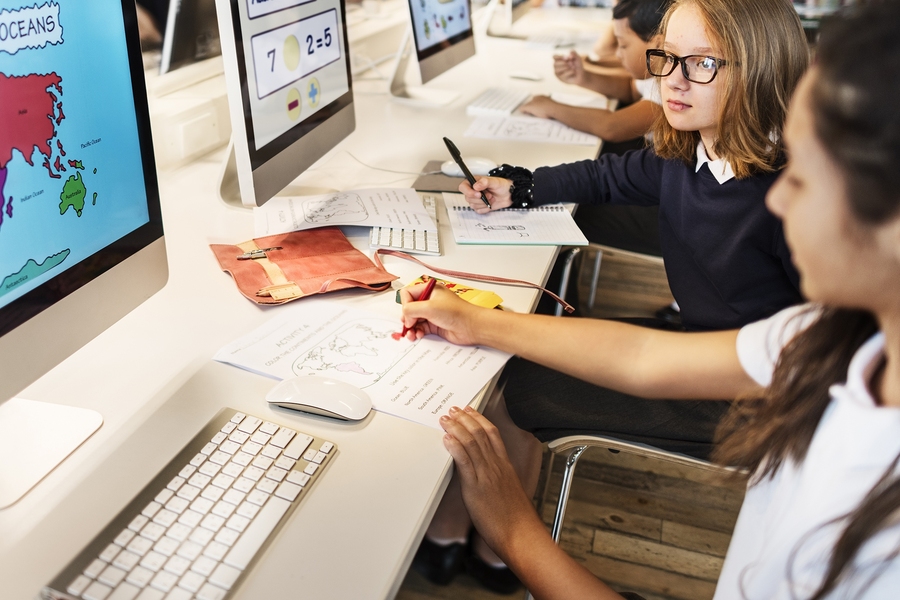[ad_1]
The constant march of technology has had a major impact on how our world works today. Exciting advances like the Internet, the rise of connected devices, smartphones, laptops, collaborative tools, and online grading have made it easier to teach and learn.
Saikiran Bomma from Connecticut explains how education has been enhanced by technology and how institutions can stay at the forefront of change in the service of improving their offerings.
Inventions That Influence Education
The root of today’s rapid technological change in the classroom can be traced back to introducing the World Wide Web in the early 1990s. As the Web grew, teachers and students could access news, encyclopedias, and current information on nearly every topic. The introduction of Google in 1998 made it much easier for everyone to access this information through the organization and availability of search results.
Before the World Wide Web, computers were used in the classroom, but they were not connected to a worldwide network. They were useful in teaching basic skills like math, reading, and computer programming.
Today, students can access reputable and scholarly information on nearly every topic. They need to be taught which sources are reliable and should be approached with a grain of salt. They can get a basic grounding in many subjects with a simple Internet search as long as they have been trained in accessing reputable sources.
How Teachers Have Implemented New Technologies
Following are a few examples of how teachers and administrators have implemented technology in their classrooms. Saikiran Bomma has assembled these examples to give ideas to school systems looking for ways to use technology to benefit all of their students.
Special Education Strategies
While there is a public perception that students in special education programs do not use technology as much as mainstream students, technology is growing in this area of education. Technology has helped students who cannot communicate verbally to express themselves. It also helps students with executive function disorders like ADHD stay organized. It helps other special education students stay on task and express their thoughts.
Hardware
Certain new types of hardware have made a large impact on education. Perhaps the most influential technology in the classroom has been the laptop computer. Students can carry the computer between home and school, completing projects wherever they go. They can access important information from anywhere. Even elementary school students are receiving laptops today, and they are useful for different tasks at every level.
Another influential hardware product is the 3-D printer. 3-D printers can help art, coding, engineering, design, and industrial arts students visualize and create new objects for practical and artistic purposes.
Large format printers also enable students to see their work differently. Cameras teach photography skills as well as helping students develop their artistic abilities. Students can learn coding in preparation for computer science and engineering careers.
Career and Academic Skills
Technology in the classroom helps build a career and academic skills for students of all backgrounds. Business and finance students can familiarize themselves with the software they will use in the workplace. Science students can perform experiments virtually without using preserved animals or dangerous chemicals.
In the classroom, students can build skills for liberal arts, applied knowledge, history, science, math, and many other disciplines. Calculus and advanced math students can use math to help them model problems. Astronomy students can study how the universe is structured. History students can examine primary sources rather than relying on their textbooks’ versions of events.
The Fine Arts
Fine arts students can participate in composition projects, electronic music-making, digital arts, and many other pursuits. Technology and the arts have become intertwined. Students can record at-home practice sessions to submit to their teachers. Enjoying the ability to adapt technology to fine arts is one of the most rewarding aspects of today’s tech world.
Remote Learning
Remote learning technologies were developed quickly during the early months of the Covid pandemic when schools closed due to rising caseloads. Many students worldwide shifted to remote learning paradigms, meaning that online grading, teaching, and video chats were extremely important. While schools have reopened, the technology infrastructure for remote learning remains.
Future Possibilities for the Expansion of Technology
The possibilities for educational technology are limitless. There are many options open to teachers and administrators in today’s quickly changing environment at all levels. Teacher committees can research the many ways in which education and technology can go hand in hand.
Saikiran Bomma maintains that technology and education can support one another and that all school districts should search for ways to adopt new methods. Knowing how to integrate technology and education is hugely helpful in planning new lessons and new areas of concentration.
[ad_2]

